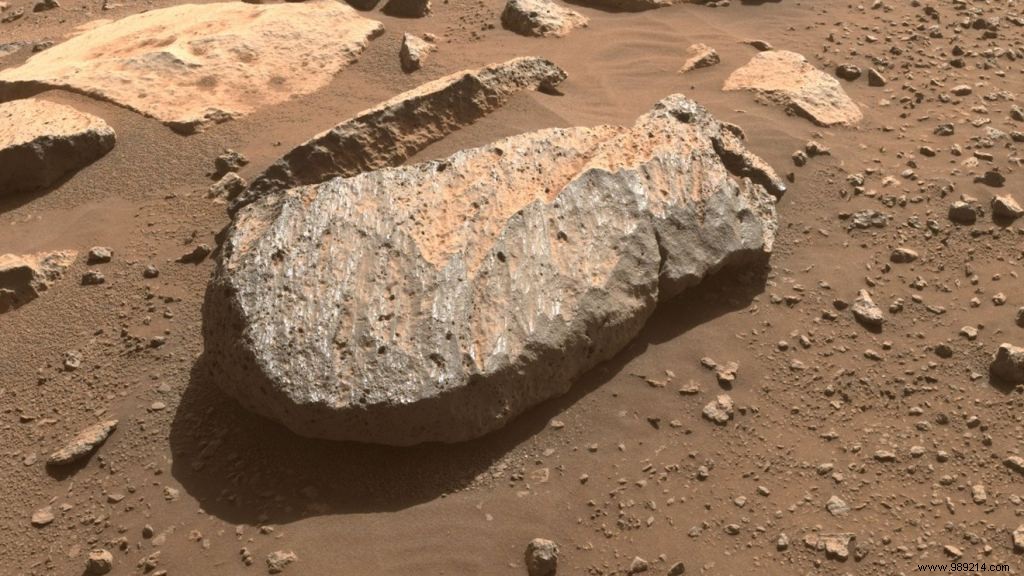Perseverance is preparing for its second attempt to sample the Red Planet. This time, the rover targets a rock found more than 450 meters from the first. The team also modified the process in order to put the odds in its favor.
Landed on Mars in February 2021, Perseverance has been focusing for several weeks on the true heart of its mission:collecting samples which will then be brought back to Earth as part of a mission later to be analyzed with state-of-the-art instrumentation and to isolate possible traces of past life. At least, that's the plan. However, space exploration has never been easy.
Commands to take the first sample were sent to the rover last August 5 (sol 164). On the morning of Friday August 6, the team gathered to witness the arrival of the data. Everything seemed to be fine until they were informed a few hours later that the sample tube…was empty. It eventually turned out that the rock Persevrance had drilled into was much softer than the researchers had imagined . The rock had then simply crumbled into powder under the drill .
Never mind, the mission team is already ready for a second attempt. The rover positioned itself a few days ago next to a new rock outcrop dubbed "Rochette", about 455 meters from the first sample site. This rock, positioned atop a ridge named Citadel, has survived millennia of wind erosion, suggesting that it should resist the drilling process more easily .

For this second attempt, the engineers will carry out a little differently. Before attempting to sample the rock, Perseverance will use its robotic arm to "abrade" its surface to examine how it reacts. Then, during the sampling process, the rover's Mastcam-Z camera will look inside the canister to make sure it's full before it's sealed. Hopefully the rover will have a good chance this time of successfully collecting a sample.
Note that the first empty sample tube will not be left on the surface of Mars, but brought back to Earth. Although it contains no rock, it contains some Martian atmosphere , which could be just as interesting to study. It's always taken.
This is obviously not the first time that Martian geology has confused scientists. The Curiosity rover has indeed already drilled into harder or more brittle rocks than mission leaders had anticipated. Last January, the HP3 heat flux sensor of the InSight mission, which was supposed to drill up to two meters underground to study the interior of the planet, could only sink a few tens of centimeters , because the ground did not offer the expected friction. NASA finally had to abandon its instrument.